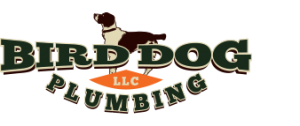Posted by Bird Dog Plumbing LLC on Nov 8, 2016 in Leak Repair Service Longview TX, Plumber Longview TX, Restaurant Plumbing Longview TX | 0 comments
If you have natural gas coming into your home to run appliances like your water heater, stove or furnace, you may have to deal with a gas leak at some point. A natural gas leak is dangerous for two reasons; the first is that it is highly combustible and the second is that it can lead to asphyxia and death through the release of carbon monoxide into your home. For these reasons, it’s important for you to know how to identify a gas leak and what to do about it if you have one. Signs Of A Gas Leak You will likely smell a distinctive rotten egg odor. The smell comes from a chemical called mercaptan and it is added by natural gas suppliers to make it easy for homeowners to know if there is a leak. There may also be some signs you can see like a white cloud, mist or fog inside your home, bubbles in standing water, blowing dust or dead or dying houseplants. If the leak is large enough, you may even hear roaring, hissing or whistling. If You Suspect You Have A Gas Leak If you smell gas, you must leave your home immediately (taking pets, too) and call 911 and your gas supplier. You must take care not to light a match, turn any appliances on or off, use a telephone or cell phone inside your home, ring the doorbell, turn on a flashlight or start your car inside the garage. Gas Safety Rules To Follow At Home Here are some things you can do to ensure that you don’t have a problem with the natural gas in your home: Never use a gas oven to heat your home. Never move or attempt to repair gas appliances yourself. Don’t step on or place anything on top of gas lines connected to appliances. Keep combustibles, like fuel and paint, away from gas appliances. Don’t let children play with gas appliances. Have your heating and venting system checked regularly for blockages. Don’t enclose your gas meter. Protect Yourself From Carbon Monoxide If your natural gas appliances stop working correctly, carbon monoxide can be produced. Unlike natural gas, carbon monoxide is odorless and also colorless, and it can be deadly in large enough quantities. The most important thing you can do to protect yourself from this poisonous gas is to install carbon monoxide detectors in...
read more





